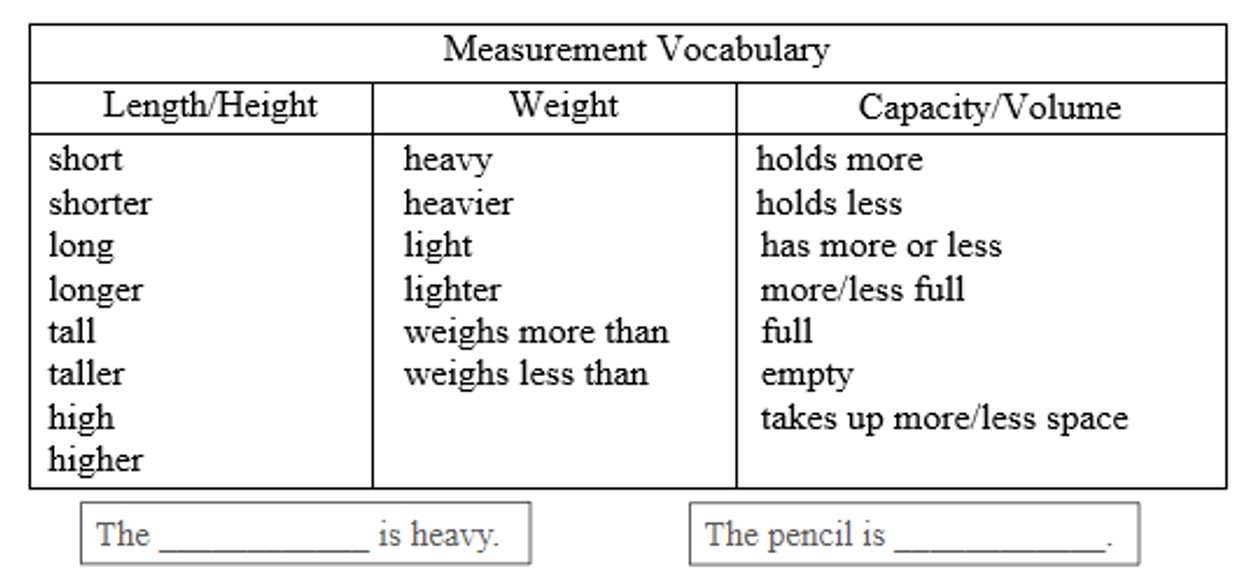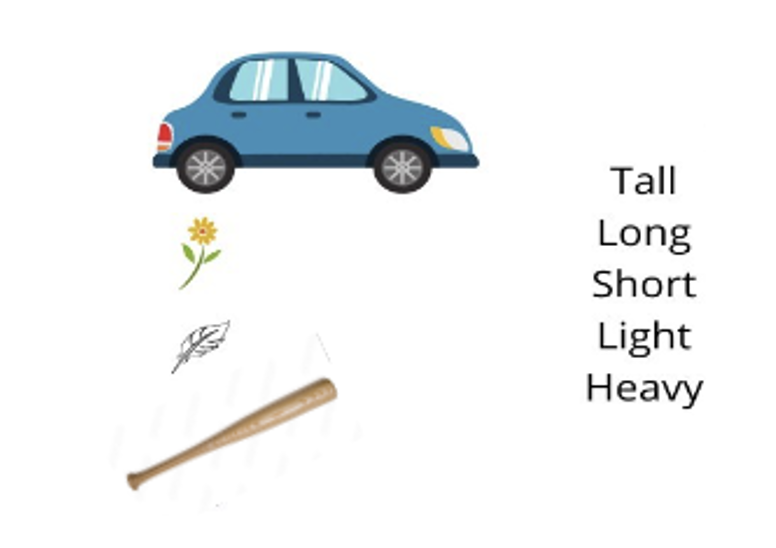General Information
Benchmark Instructional Guide
Connecting Benchmarks/Horizontal Alignment
Terms from the K-12 Glossary
- NA
Vertical Alignment
Previous Benchmarks
Next Benchmarks
Purpose and Instructional Strategies
The purpose of this benchmark is to develop an understanding for measurement and attributes that can be measured, without focusing on the value of the measurement. Through this benchmark students begin to develop related vocabulary they will also apply in later benchmarks and grade levels.- Instruction includes students describing measurable attributes and using vocabulary such as tall, short, long, heavy and light (MTR.4.1).
- Instruction includes the introduction of terms to compare measurable attributes, such as longer, shorter, heavier and lighter.
- Instruction includes concrete objects as well as images and context to describe measurable attributes (MTR.7.1).
- The expectation of this benchmark is not to focus on numerical values of measurement by estimating or measuring, but to develop understanding of attributes that can be measured and vocabulary used to describe those attributes.
Common Misconceptions or Errors
- Students may confuse measurable attributes and call an object big when they mean it is heavy, long, or tall. Explain that tall is a measure of height from bottom to top and long is a measure of length from one end to the other.
- Students may assume that there is only one way to describe attributes.
- Students may not understand that an object can be both short and heavy.
- Students may think that because an item has a large volume it means that the item is also heavy.
Strategies to Support Tiered Instruction
- Instruction includes opportunities to use the same object to explore multiple attributes during different lessons, as they actively participate in experiences that include inquiries in which length, volume, and weight must be considered. Students are encouraged to verbalize their thinking while a teacher scaffolds instruction by teaching measurement vocabulary and providing sentence frames during the activity.

- Teacher guides student discussions and models a think-aloud about each attribute by connecting student-centered language with key mathematical vocabulary. The results of measurement investigations are recorded with drawings, labeling, and verbal communication to peers or teacher about their results.
- For example, how many ways can we measure a bucket?

Instructional Tasks
Instructional Task 1 (MTR.1.1, MTR.7.1)
Instructional Items
Instructional Item 1
Connect each object to (a) word(s) that could be used to describe it.
*The strategies, tasks and items included in the B1G-M are examples and should not be considered comprehensive.
